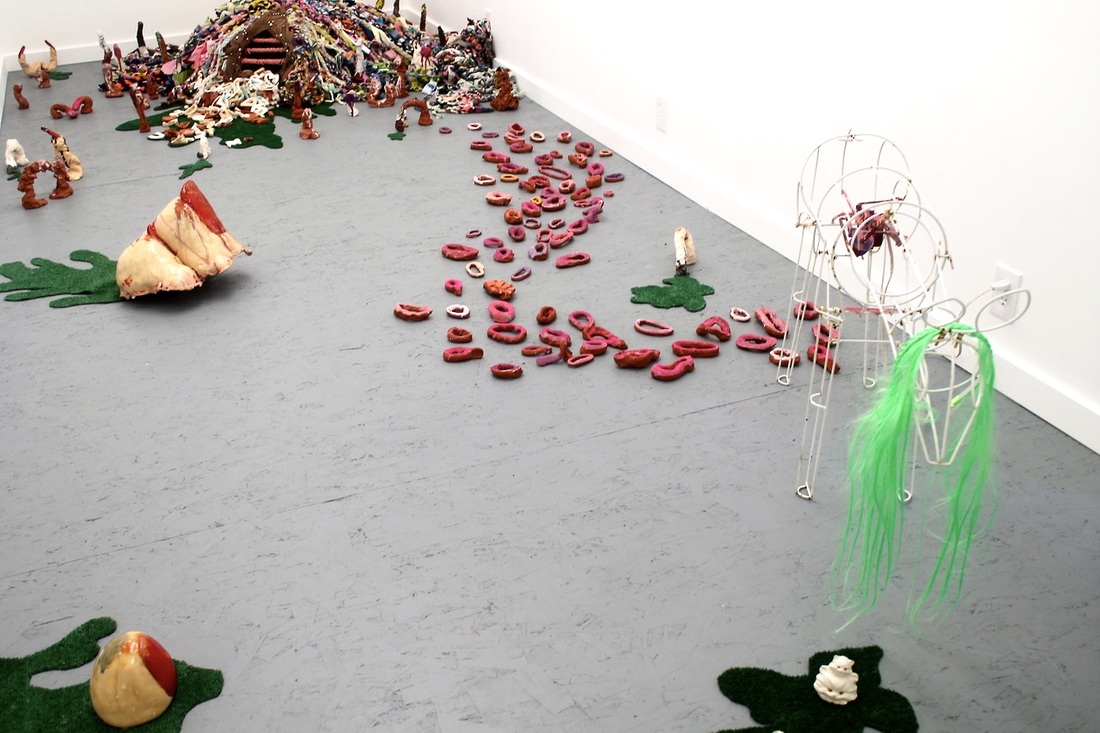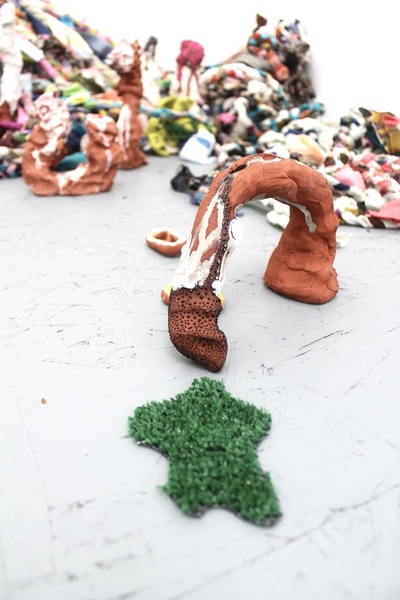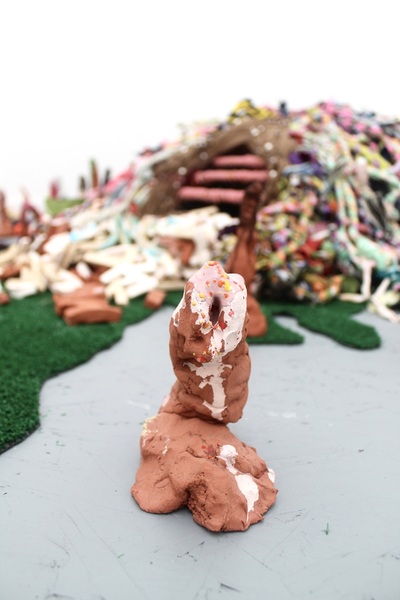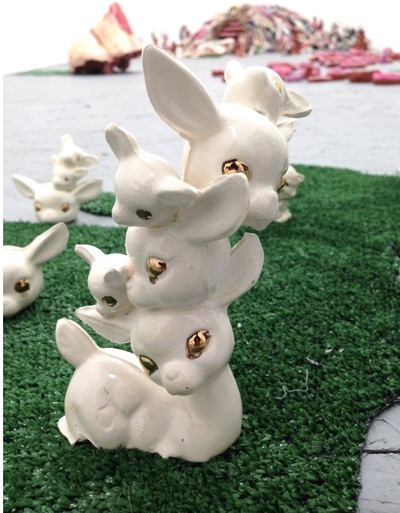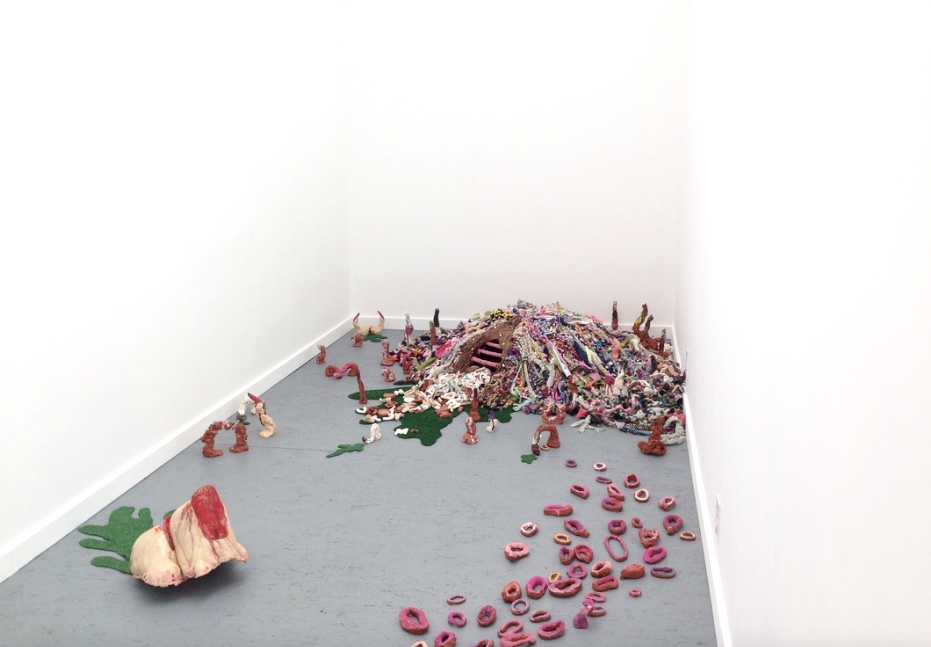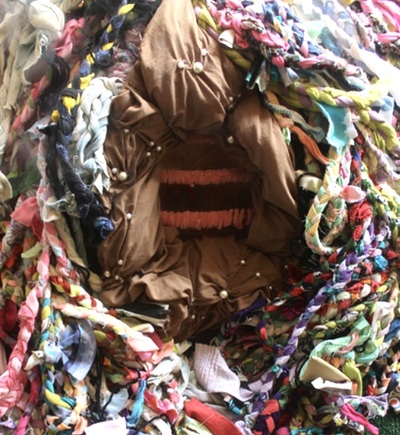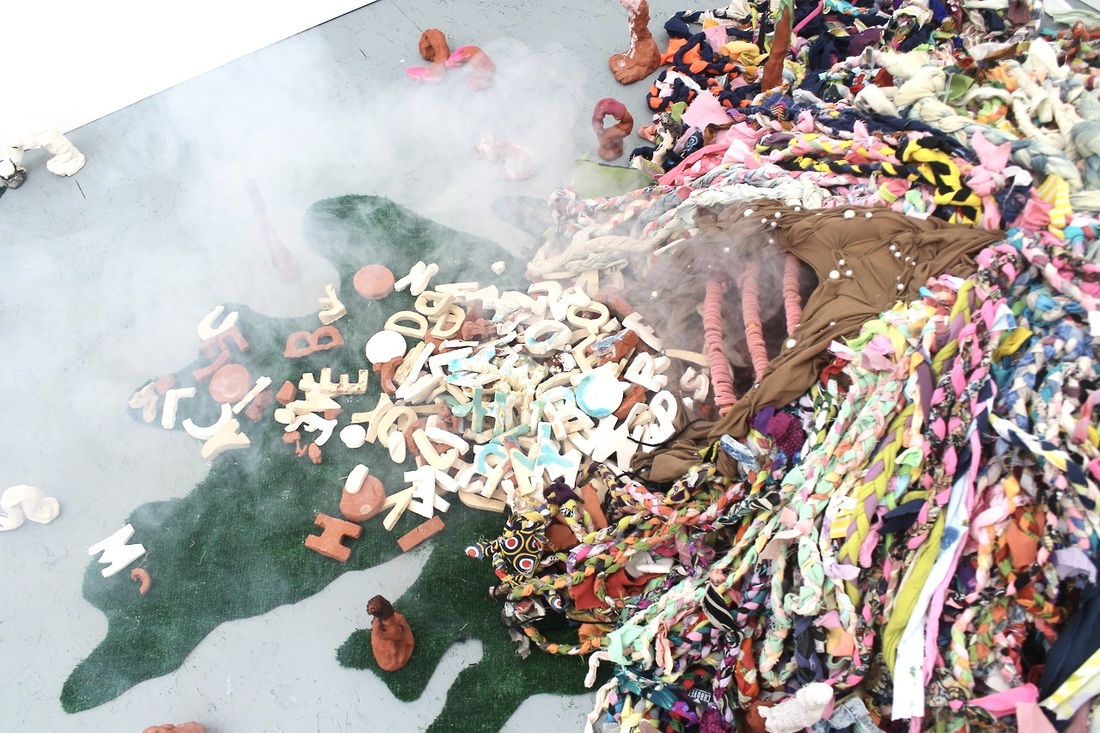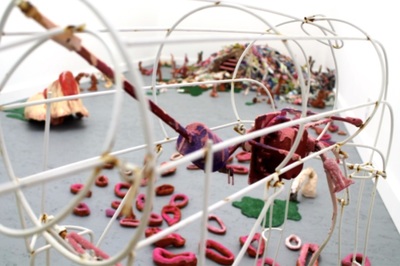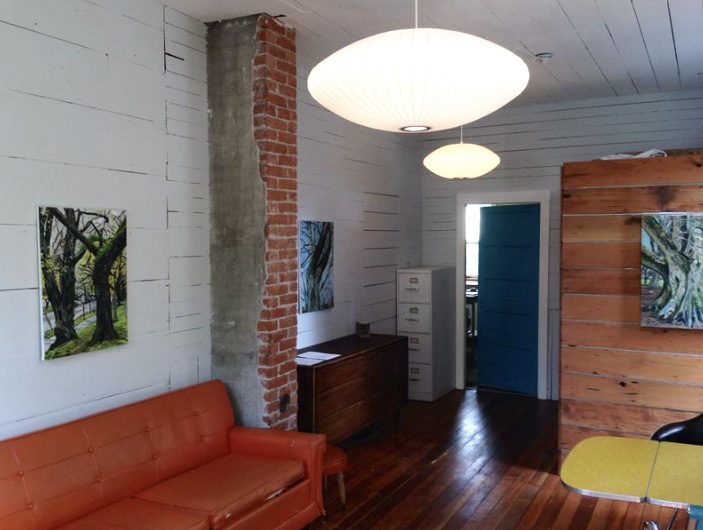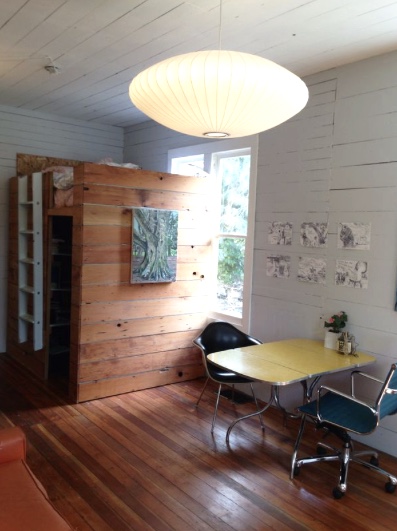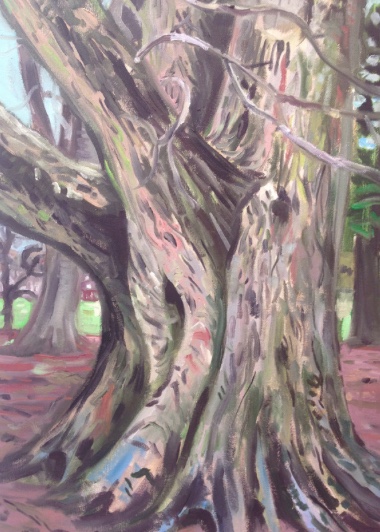Invisible Landscape
Nature is a Deceiver/ Trust No Bitch - Caitlin Rose Sweet
Irving Park Suite - Daniel Duford
April 27 - May 17, 2014
Nature is a Deceiver/ Trust No Bitch
Caitlin Rose Sweet
Caitlin Rose Sweet
Caitlin Rose Sweet's craft-based installation playfully destabilizes the naturalized cultural assumptions about man’s relation to nature, femininity, and the other by drawing a cord connecting environmental exploitation, misogyny, and cultural appropriation. Sweet peels back the romanticized layers of the dichotomy that on one hand envisions the landscape of femininity/nature/other as a yielding submissive abundance of resource and on the other as a dark force that can not be trusted. Her exposed world shows that spoils of the land might be perhaps a little spoiled with a growing agenda.
Bio
Caitlin Rose Sweet is a MFA candidate with the Applied Craft and Design program between PNCA and OCAC. Her work explores the intersections between craft, queerness, and pop culture. Sweet is interested in disruptions in cultural production, craft as a residue of queer embodied gestures, and monstrous femininity.
caitlinrosesweet.com
Irving Park Suite
Daniel Duford
Daniel Duford
I’ve lived next to Irving Park for 16 years. I’ve witnessed economic and cultural shifts reflected in the park. Seasons have come and gone- winter snow storms, radiant summer afternoons and honey colored autumn evenings. I am aware of the history that precedes me. I know for instance that the first builders of the neighborhood were Volga Germans. I see the names of long dead contractors imprinted in weathered concrete sidewalks. I know that after a devastating flood the area became home to a thriving African American middle class that eventually gave way to redlining and gentrification. I can sense several communities operating in the same space under different assumptions as if we all occupy alternate dimensions. On any given summer afternoon all these various publics activate the park. The only beings who know this intimately are the trees.
The trees have witnessed the change from dog track to city park. The trees may not be as old and venerable as other parks. They run the gamut from Ponderosa Pine to Northern Red Oak to Black Locust. They’re like unassuming old folks who sit on the stoop watching the neighborhood kids run by. It pays to occasionally stop and talk with these elders. Their slow moving stories may focus on long passed minutia but therein lies the meat of the thing. These witness trees are repositories of an invisible landscape; one that is flagged by memory and whose map lines overlay the neighborhood’s current configuration.
At some point recently I decided that I need to start listening to the trees. They are like my AA sponsors. They remind me to pay attention, to look. When my mental monkeys are noisily grinding their organs of distraction one or another of these Irving Park trees calls me to task. Trees after all are universes onto themselves. Their structures support many life forms and tiny ecologies. They burn warmly for our food and winter stories. And their forms provides excellent metaphorical sustenance to our myths and philosophies. Of course, I needed to do portraits of them. And those portraits must be rendered in the most traditional of easel painting. It is a way of forcing myself to understand the place I call home. There is no irony protecting me from whether or not these are affecting pictures. They carry the weight of tradition; the ball and chain of a dubious history of landscape painting. Before you is the beginning of an attempt to know the trees of Irving Park and hear their stories.
Along with the paintings are small drawings that hint at the turbulent fast moving events of human history. We must seem like the efflorescence of insects to an old tree. The drawings reflect the tumultuous change represented specifically in the neighborhood but also our times in general. We are always in flux. If you walk out of here and go into the park I ask that you pay close attention to the witness trees. I also ask that you close your eyes and feel the world spinning caught in history’s propulsive eddies.
Bio
Daniel Duford is an artist and writer. He is a 2010 Hallie Ford Foundation Fellow and a recipient of a 2012 Art Matters Grant. His self-published comics include The Naked Boy and The Green Man of Portland. His work has been shown at MASS MoCA, The Atlanta Center for Contemporary Art, Maryhill Museum, Bellevue Arts Museum, Clay Studio, The Boise Art Museum, Contemporary Craft Gallery, PICA and The Art Gym at Marylhurst University. His writing has appeared in High Desert Journal, Parabola, Artweek, ARTnews, The Emily Dickinson Award Anthology, The Organ, The Bear Deluxe, Ceramics Monthly, Ceramics: Technical and Ceramics: Art and Perception. His work has been reviewed by The NY Times, The Village Voice, NY Press, The Albany Times Union, The Oregonian, Sculpture Magazine, Art Papers, Artweek, The Willamette Week and the Portland Mercury. Duford teaches intermedia and sculpture at Pacific Northwest College of Art. He recently curated an exhibition called Fighting Men: Leon Golub, Peter Voulkos and Jack Kirby at the Hoffman Gallery at Lewis and Clark College. He teaches at Pacific Northwest College of Art.danielduford.com
Links to Research, Documentation, & Online Exhibitions
-Daniel Duford, "Irving Park Suite dispatch #1," Surplus Space. 30 April 2014.
-Daniel Duford, "Irving Park Suite: the Invisible Landscape," Surplus Space. 5 May 2014C.
-Timothy Morton, "Queer Ecologies," PMLA, March 2010
-Tumblr Blog

